Grass growth on Charles Clarke’s farm in Co Cavan slowed up during the dry spell in July but it recovered well in August, with growth rate and average cover this week sitting at 74kgDM/ha/day and 1,064kgDM/ha respectively.
Concentrate feed levels were increased from 2kg/cow/day to 6kg/cow/day and baled silage was buffer-fed to reduce demand on grass during the worst of the drought. The lowest grass growth recorded on the Clarke farm in July was 39kg DM/ha/day and the extra feeding went on for around two weeks.
Charles points out that it is not the 24 bales that he had to buffer feed that will be missed in his winter fodder stocks, rather it is the extra bales that are usually made from surplus grass during a normal July but weren’t this year.
However, he should still be well enough stocked for the winter, with surplus on the grazing platform coming out this week and 18 acres on an outfarm is being held for third-cut silage.
Dry conditions allowed excellent utilisation of grass and hitting target residual covers then is paying dividends for grass quality now.
Charles drained eight acres in June by gravel mole-ploughing and putting in new collector drains.
The subsequent reseed in early July struck well and was grazed off by cows last week.
Heifer calves were weighed last week and are mostly on target. A lighter group of 22 heifers averaged 155kg and were put on 1kg of concentrates. A strong group of 26 averaged 175kg and are on grass only.
Phase one
Increasing the proportion of the grazing block that is at optimal levels for pH, phosphorus and potassium is a key improvement made on the Clarke farm during phase one of Dairylink Ireland programme.
In 2016, 20% of the milking platform had optimal soil status, compared with 83% in the latest soil analysis in January 2018.
The whole grazing block had optimal soil potassium, whereas 17% was below optimal for phosphorus and 15% for pH. This has driven grass growth, with the grazing block yielding 12.8t DM/ha last year.
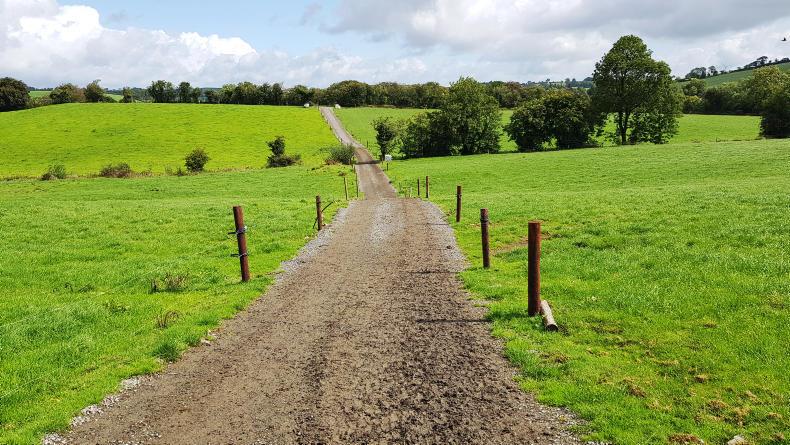
Charles operates a grass-based block spring-calving system.
Charles has also made rapid progress in improving herd genetics over the past three years. He has a young herd after introducing 42 heifers this spring and actively culling and selling off older cows. Herd EBI is €101, with 2017 and 2018 calves having an average EBI of €152 and €176 respectively.
Charles has been selecting sires to maximise milk solids produced per hectare. With sire selection, he targets 30kg for combined fat and protein.
The high proportion of young stock in the herd has made a difference this year, with fat and protein running ahead of 2017 levels so far this year.
Cow size has reduced on the Clarke farm, with more Jersey genetics present in the herd now.
Fertility sub index is also important in sire selection, as Charles operates a block spring-calving system, with six-week calving rate (cows and heifers) standing at 93% in 2018. This is different from the start of the programme, when there were some autumn-calving cows in the herd.
Charles says that the block-calving system has been beneficial for labour management, as he gets a break from milking in the winter and periods of work with calving and breeding do not overlap.
The focus on the farm is matching milk production to seasonal grass growth, with the long-term aim being to produce 450kg of milk solids per cow from 500kg of purchased feed. As Table 1 shows, concentrate feed levels moved up last year, because feed rates were increased during the wet autumn.
Farmer comment: Charles Clarke
What are the three most important steps you have taken in the last three years?
Addressing soil fertility.Improving herd genetics.Tracking heifer weights.What is your aim over the next three years?
I am looking at options for building a new milking parlour and calf accommodation on the farm in the near future.
A lot of time is spent in the existing eight-unit parlour, which has no meal hopper. A new well-laid-out calf shed should make things easier in the spring. Both investments come back to labour management and will be developed as part of a costed business plan.
I am also taking steps to improve ground on outfarms, similar to what has been done on the home block in recent years.
Investments will be made in drainage, addressing soil fertility and reseeding to increase output from the whole farm.
Next week: Introduction to the first of the new phase two Dairylink Ireland participants.
Read more
Making investments for expansion in Tyrone
Dairylink: increasing grass yields and herd size in Tyrone
Dairylink Ireland: displacing purchased feed in Co Down
Grass growth on Charles Clarke’s farm in Co Cavan slowed up during the dry spell in July but it recovered well in August, with growth rate and average cover this week sitting at 74kgDM/ha/day and 1,064kgDM/ha respectively.
Concentrate feed levels were increased from 2kg/cow/day to 6kg/cow/day and baled silage was buffer-fed to reduce demand on grass during the worst of the drought. The lowest grass growth recorded on the Clarke farm in July was 39kg DM/ha/day and the extra feeding went on for around two weeks.
Charles points out that it is not the 24 bales that he had to buffer feed that will be missed in his winter fodder stocks, rather it is the extra bales that are usually made from surplus grass during a normal July but weren’t this year.
However, he should still be well enough stocked for the winter, with surplus on the grazing platform coming out this week and 18 acres on an outfarm is being held for third-cut silage.
Dry conditions allowed excellent utilisation of grass and hitting target residual covers then is paying dividends for grass quality now.
Charles drained eight acres in June by gravel mole-ploughing and putting in new collector drains.
The subsequent reseed in early July struck well and was grazed off by cows last week.
Heifer calves were weighed last week and are mostly on target. A lighter group of 22 heifers averaged 155kg and were put on 1kg of concentrates. A strong group of 26 averaged 175kg and are on grass only.
Phase one
Increasing the proportion of the grazing block that is at optimal levels for pH, phosphorus and potassium is a key improvement made on the Clarke farm during phase one of Dairylink Ireland programme.
In 2016, 20% of the milking platform had optimal soil status, compared with 83% in the latest soil analysis in January 2018.
The whole grazing block had optimal soil potassium, whereas 17% was below optimal for phosphorus and 15% for pH. This has driven grass growth, with the grazing block yielding 12.8t DM/ha last year.

Charles operates a grass-based block spring-calving system.
Charles has also made rapid progress in improving herd genetics over the past three years. He has a young herd after introducing 42 heifers this spring and actively culling and selling off older cows. Herd EBI is €101, with 2017 and 2018 calves having an average EBI of €152 and €176 respectively.
Charles has been selecting sires to maximise milk solids produced per hectare. With sire selection, he targets 30kg for combined fat and protein.
The high proportion of young stock in the herd has made a difference this year, with fat and protein running ahead of 2017 levels so far this year.
Cow size has reduced on the Clarke farm, with more Jersey genetics present in the herd now.
Fertility sub index is also important in sire selection, as Charles operates a block spring-calving system, with six-week calving rate (cows and heifers) standing at 93% in 2018. This is different from the start of the programme, when there were some autumn-calving cows in the herd.
Charles says that the block-calving system has been beneficial for labour management, as he gets a break from milking in the winter and periods of work with calving and breeding do not overlap.
The focus on the farm is matching milk production to seasonal grass growth, with the long-term aim being to produce 450kg of milk solids per cow from 500kg of purchased feed. As Table 1 shows, concentrate feed levels moved up last year, because feed rates were increased during the wet autumn.
Farmer comment: Charles Clarke
What are the three most important steps you have taken in the last three years?
Addressing soil fertility.Improving herd genetics.Tracking heifer weights.What is your aim over the next three years?
I am looking at options for building a new milking parlour and calf accommodation on the farm in the near future.
A lot of time is spent in the existing eight-unit parlour, which has no meal hopper. A new well-laid-out calf shed should make things easier in the spring. Both investments come back to labour management and will be developed as part of a costed business plan.
I am also taking steps to improve ground on outfarms, similar to what has been done on the home block in recent years.
Investments will be made in drainage, addressing soil fertility and reseeding to increase output from the whole farm.
Next week: Introduction to the first of the new phase two Dairylink Ireland participants.
Read more
Making investments for expansion in Tyrone
Dairylink: increasing grass yields and herd size in Tyrone
Dairylink Ireland: displacing purchased feed in Co Down





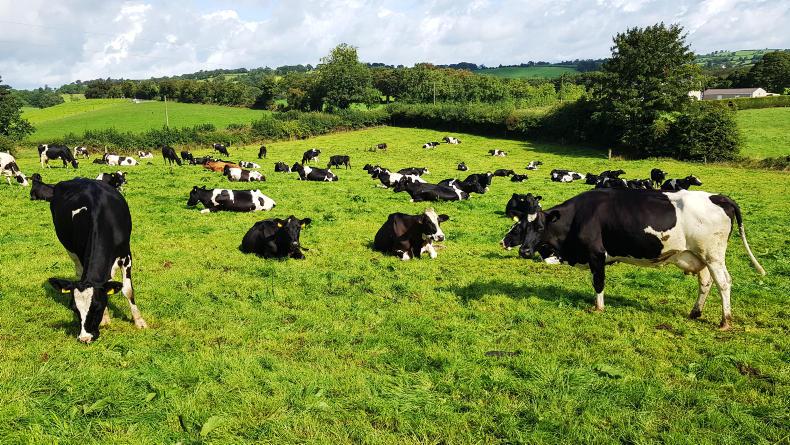

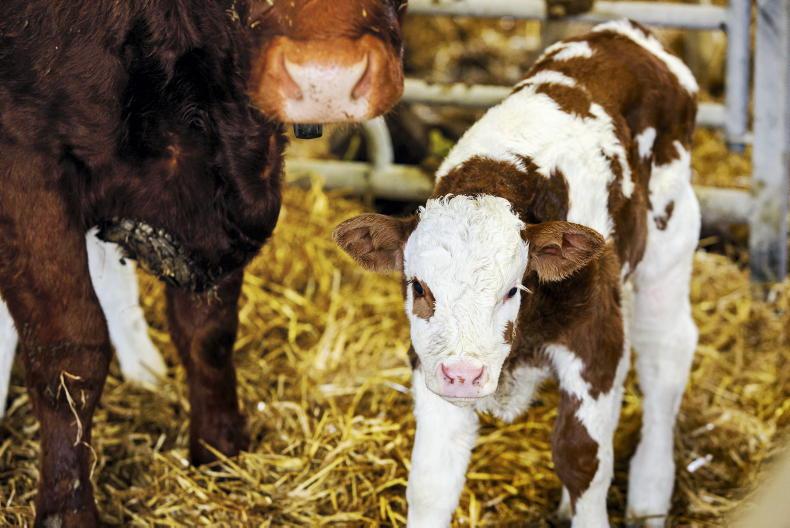
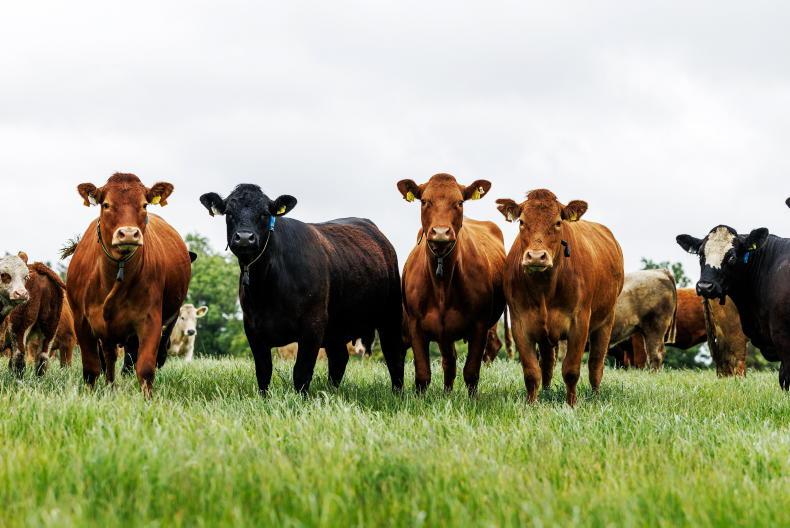
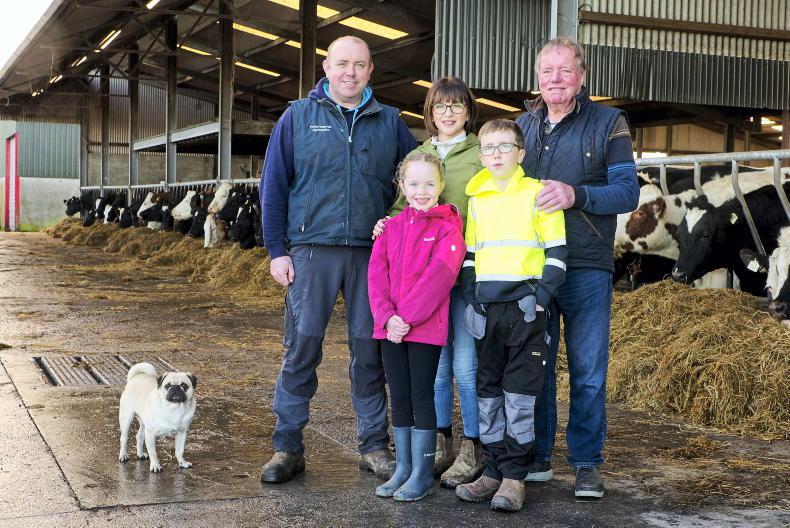
SHARING OPTIONS